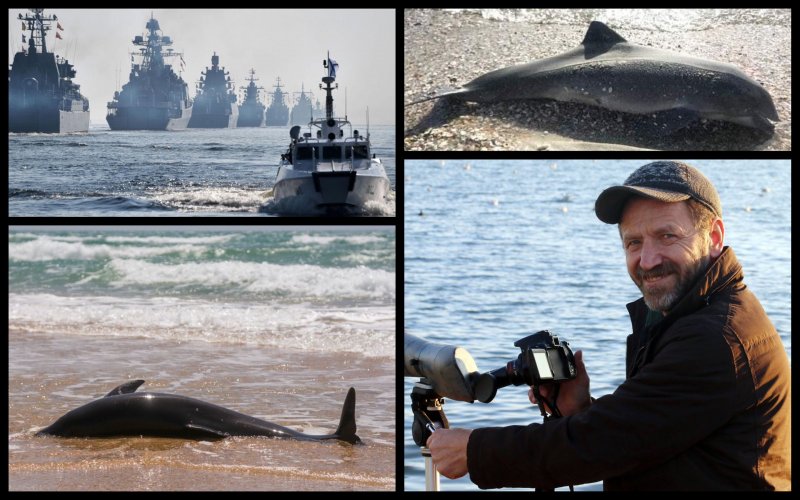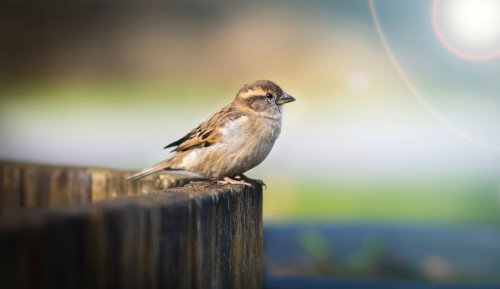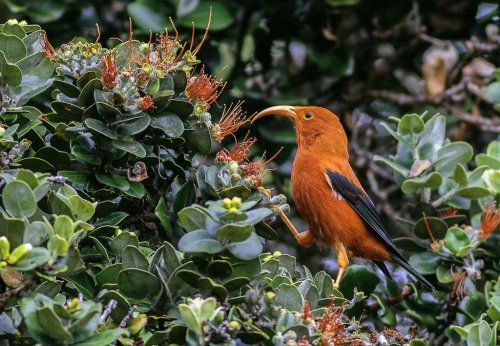Almost 50,000 dolphins died during March-October due to the fact that active hostilities continued on the territory of the Black Sea coast of Ukraine. This staggering number has shocked scientists and everyone who understands the real scale of the threat. In March, dolphins return to Ukrainian shores again. Environmentalists await this return with great anxiety.
About this and much more, EcoPolitic spoke with Ivan Rusev, an ecologist, doctor of biological sciences, head of the research department of the National Natural Park Tuzlivski Lymany.
— How, in general, did the year of the ongoing war in our country affect the animals of the Tuzlivski Lymany?
— There are many different species of animals, mammals, and birds in our National Natural Park Tuzlivski Lymany. If we talk about everyone, then a month will not be enough. But still, I would like to talk about some of them first, because they suffer the most from the fact that they found themselves at the crossroads of war and peaceful life, which they had a little more than a year ago.
In total, we have 262 species of birds in the park, which mainly migrate from Africa to the North and then return from the North to Africa. And so, with the beginning of the full-scale invasion of Russia on the territory of Ukraine, especially in March, when there was a migration of birds from Africa through our territory (and in the spring we have about a million birds of various species migrating), those birds that create an aquatic environment (I note, that we have about 13 estuaries, where birds stop, feed, rest, some begin nesting during this period) were greatly affected by active hostilities in these territories.
Here, for example, there are such waders — cobblers, very interesting in the shape of their beaks, they are unique and extremely sensitive. When the waders began to nest, the raptors began to bombard our territory, especially its eastern part, and the boulders where the birds begin to nest have changed a lot from these bombings and shelling. And in the eastern part of our park, there are many shells that have not exploded and are still waiting for demining, which is also a real threat. That is, the shoemakers suffered a lot from all these military realities. And those birds that flew through our park (there are some species that have to fly six thousand kilometers to the north to the tundra), were afraid of bombings, changed their locations, looked for other shelters, which requires additional energy expenditure from them. It is because of this that the birds arrive at the nesting places not as well-fed as they should be, and therefore the nesting is not as successful as it was before the war. They give fewer chicks, even fewer of them grow to adulthood, and the population size of some species is greatly reduced due to all these factors that I have described.
We found dead dolphins en masse on the coast.
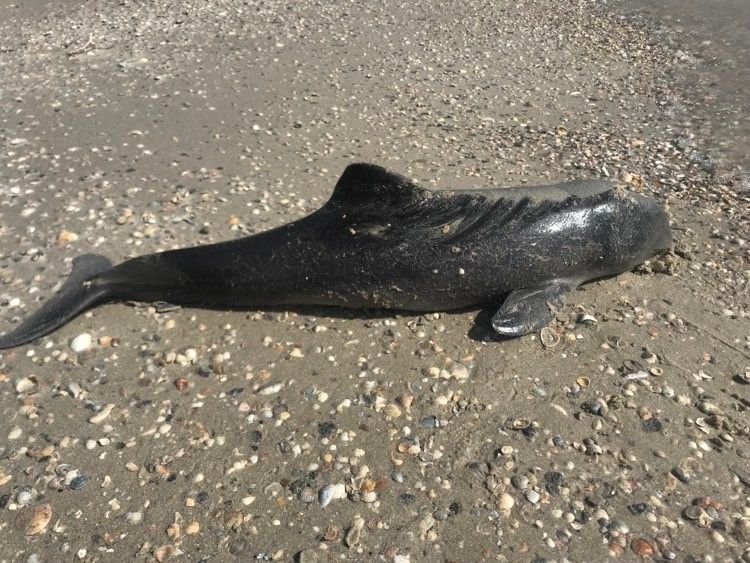
Photo of NPP Tuzlivski Lymany
For a very long time I can talk about the survival of mammals, especially dolphins, in the conditions of war. After all, it was with the dolphins that an extremely painful situation developed, they were the ones who suffered the most massively from the war.
— Why did the dolphins react so painfully to the new war realities, what factors influenced this?
— There are several such factors. I will begin my story with the fact that the territory of our park has 27,865 hectares, and 44 kilometers of it is the coast of the Black Sea. This is the zone between the Danube and the Dniester. Dolphins appear here very often from March to October. And so, when the war began and these mammals began to migrate to our zone, they found themselves in a difficult situation, because here, in the northwestern part of the Black Sea, there were a lot of surface and submarine boats, submarines. Submarines use sonars (these are sonar devices, very powerful systems that have an extremely negative effect on dolphins), and this fascist evil appeared here two weeks before the start of hostilities, sometime in February 2022. At that time, they already occupied the water area and did not let Ukrainian ships to the south.
In winter, Black Sea dolphins live on the coasts of Turkiye, Georgia, southern Russia, Crimea, and begin to migrate to us somewhere in mid-March. When the dolphins began to swim to the shores of the Tuzlivski Lymany at that time, we saw the first animals that died from sonar.
I would like to remind you that here we have three species of dolphins. Actually, we conventionally say "dolphins", but it would be scientifically correct to call them Black Sea cetaceans. One of these species is the bottlenose dolphin, which everyone knows well because they are kept illegally in dolphinariums, which I am always against. The second is a common dolphin or white-tailed dolphin, and the third is a porpoise or porpoise, these are such small dolphins that are also familiar to everyone.
Before the start of the war, various scientists counted about half a million of these three species, but since the beginning of hostilities, we began to register dead dolphins, and in two or three months we were surprised that the dead animals thrown up by the sea had no signs of being caught in the nets. After all, earlier, even before the war, we noted that dolphins mostly died due to falling into the nets of poachers or fishermen. The length of such nets was about three thousand kilometers — in the northwestern part of the Black Sea.
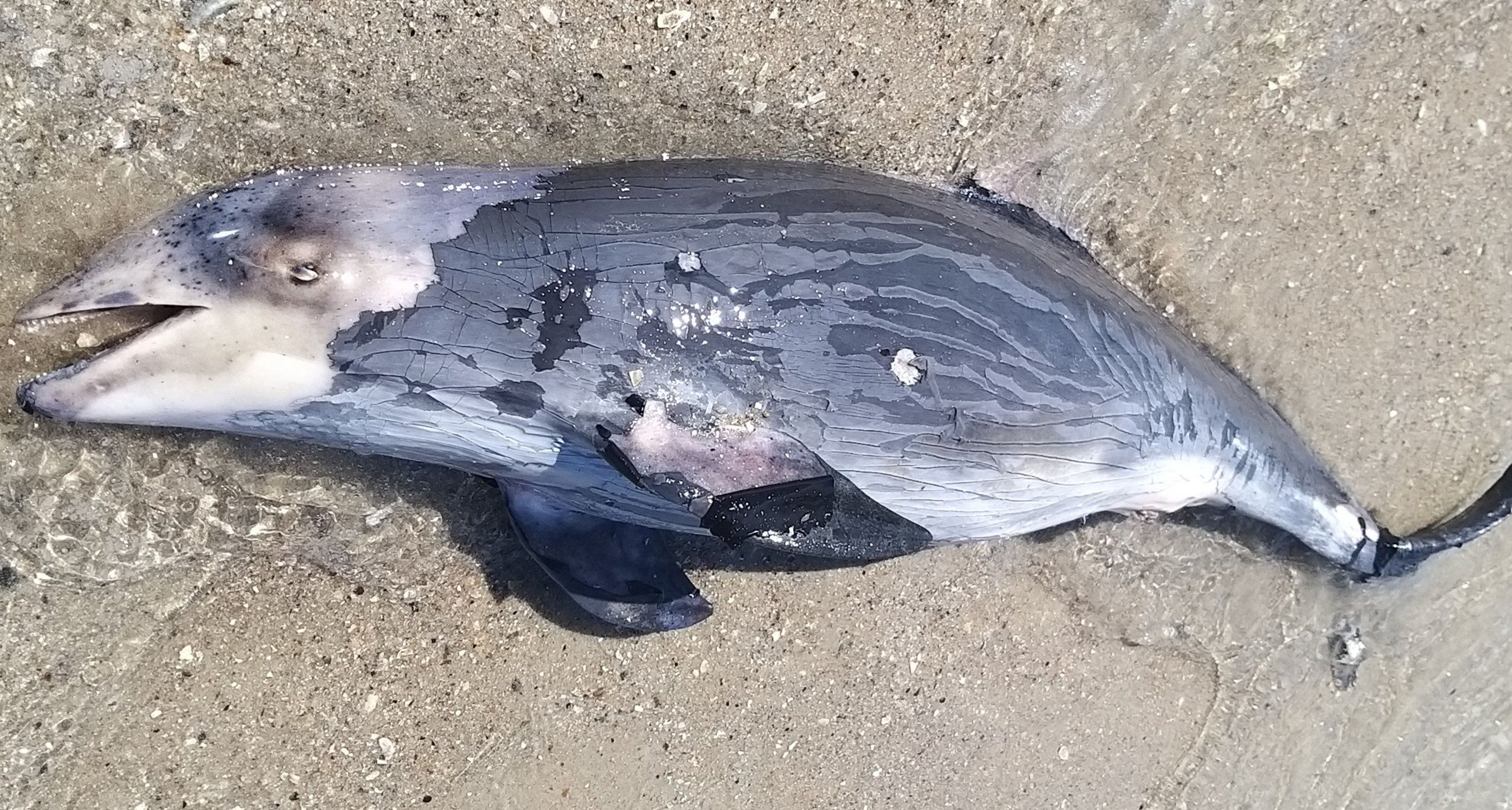
Photo of NPP Tuzlivski Lymany
But since the beginning of the war, these nets are no longer in the sea, because fishing was prohibited due to mining — therefore, we reject the death of dolphins due to falling into the nets. After all, there were no traces of nets on the bodies of the dead dolphins and there was no main terrible sign — cut off fins. It's even scary to talk about it, but when a dolphin is caught in a net, poachers or fishermen cut off its fins in order to quickly untangle the dolphin and throw it away. Then the helpless animal dies.
Therefore, we did not find these characteristic features on the carcasses of dolphins killed since the beginning of hostilities, but the animals still died en masse.
I have already mentioned that the coast of the park Tuzlivski Lymany is 44 kilometers long and in the pre-war year we found at most three cetacean carcasses in this distance. Since the beginning of the war, the military gave us permission to work only on six kilometers of the coast, where we watched the animals that were dying more and more from scabies.
From March to August was the most active phase of the war on the Black Sea. And when Zmiiny Island was already de-occupied in June-July, when the so-called Boika towers and gas towers were destroyed, and when our defenders pushed back the occupiers all the way to the Crimea, there was no longer such a load of sonars and their impact on animals. But during this period, we found 34 dead dolphins on six kilometers of the coast. If we compare purely in digital terms, the number of dead dolphins has increased tenfold! And we realized that they die not from falling into the nets, but from other reasons.
The war has brought several factors that kill dolphins.
— What were these reasons?
— One such reason can be a virus that appears when the ecosystem where the dolphin lives is unfit for life, or the animals are infected with something. After all, weakened dolphins are infected with this virus very quickly. And when we saw such a shocking number of dead dolphins, we began to look for information from various sources, including from other countries, such as Bulgaria, Romania, and Turkiye. At that time, they even received information from racist publications, which were later closed down, but this information indicated that there had never been so many dead animals in the life of dolphins in the period from March to August. Even in Russia, for Crimea, they maintained that this is nonsense. And there were a lot of contused dolphins—those that didn't die, but were deeply affected by the sonar. As a result, the animals became completely disoriented, ran aground, lived there for several days, and then died.
And finally, according to the results of all the data we collected, it turned out that about three thousand dolphins died. These are only those that have been discovered. But there is a special formula, according to which scientists calculate how much can die as a whole. Such calculations were carried out by the National Agency for Meteorology of the USA, various experts from European countries, and our Bulgarian colleagues, who made models - how much carcasses of dolphins that die for various reasons are thrown out by the sea. From sonars, or oil pollution, or other factors. According to this formula, it turns out that on average only 5% of dead dolphins are washed ashore by the sea. And another 95 percent remain in the depths of the sea or ocean and do not appear to the eyes of observers. Therefore, using this formula, we arrived at the number of 50 thousand cetaceans that died in the Black Sea from the war.

Photo of NPP Tuzlivski Lymany
— What factors that led to the extermination of dolphins in the Black Sea can be called the most aggressive?
— First of all, these are sonars. After all, this powerful sound system very aggressively affects dolphins, their echolocation, acoustic system. Dolphins use 60% of their energy to navigate in space, to find food and to communicate. But when the animal is affected by sonar, it becomes as if blind - it does not see or orient itself, it cannot look for food, which is the most important thing. She comes across mines and other threatening circumstances. And just in front of his eyes every day he loses weight very quickly, because he has no food. And when he loses weight, he begins to use the reserves of fats from the body, which accumulate a lot of pesticides and various chemical pollutants. So the dolphin is already autonomously infected with various chemical compounds. And that's why his immune system suffers a lot, the animal suffers from viruses that are in its body. If these viruses do not harm healthy individuals, they become deadly for the weak.
Infection is already a secondary phenomenon.
So, a secondary reason appears — dolphins die from infections. And the hunters very often claimed that the animals they found had an infection that led to their death.
But, firstly, we were not given any laboratory test to confirm this infection, and, secondly, we claimed that the infection was a secondary phenomenon, because the sonar was the primary one — it exerted its devastating effect on the animals, and then the process already took place virus infection.
Another reason is the bombing. When Zmiiny was de-occupied, they bombed Boyka's gas towers — a lot of them fell into the Black Sea. We have a wooden house in the park, which is located on the coast, at a distance of 50 kilometers from the Snake Island. And when the sea was bombed, this house simply bounced from those powerful explosions. One could only imagine how the dolphins feel, who find themselves not far from the fall of such a bomb. These sensations can be compared to a diver who quickly rises from the bottom of a reservoir to the surface — he gets the so-called caisson disease. It is also called gas embolism. This is when nitrogen, which dissolves at depth, very quickly leaves the capillaries, ruptures them, which can lead to a myocardial infarction. Dolphins also die from the fact that they jump to the surface of the Black Sea very quickly.

Photo of NPP Tuzlivski Lymany
The third reason was discovered by our Bulgarian and Romanian colleagues, who showed photos of dolphins with burns — the animals were affected by phosphorus mines. And there is a conclusion provided by the Ministry of Environmental Protection of Ukraine, which states that dolphins, according to the conclusions of foreign researchers, suffered from phosphorus mines that burn even in water.
So, due to these three factors, the Black Sea dolphins found themselves in such a trap that it was impossible to help them in any way. And only when the Armed Forces drove the Rashists out of the northwestern part of the Black Sea, this mass death of dolphins ended. After that, skulls and vertebrae of animals were found in various places, but these were those that perished precisely at the peak of the occupation.
Then our dolphins emigrated to Turkiye, Georgia and Crimea.
— What is the current situation?
— Now we are waiting from day to day for the dolphins to start coming back to us. We are very worried, because at any moment last year's situation can be repeated, because the Russians are based in the Sevastopol bays and Novorossiysk and they can very quickly go to some distance to the mainland, shoot with calibers and use sonars. So it is possible that animals may again suffer from war...
It takes 50 years to restore the pre-war dolphin population
— What can be done to help the dolphins even after the end of hostilities? Is it possible to return their population to at least the pre-war level?
– In order to have at least some chance of saving cetaceans, we at the Tuzlivski Lymany NPP developed a scientific justification for the creation of a large marine reserve for cetaceans after the war. So that the dolphins have the opportunity to reproduce. Because the same afoline, which is well known to people, gives one baby for two or three years, and if there is stress or contusion, then the period of birth of offspring is generally postponed.
And it will take about 30-50 years to restore the population of at least the pre-war period. We already have the support of the Ministry of Environment to create such a marine reserve with an area of three thousand square kilometers.
This, most likely, will be an expansion of the Tuzlivski Lymany NPP, which has a piece of the sea. It is planned that the equator will be very large – to Zmiiny Island, where dolphins will feel safe. After all, there was no such security even before the war. We had a lot of poachers and fishermen here, as a result of which dolphins died en masse. So we hope that before the end of the war, the President will sign the Decree I mentioned and we will be able to protect the dolphins in this way so that they can rebuild their population.
— Is it possible to somehow influence the situation with dolphins before the end of the war, so that they do not suffer so much and en masse?
— You see, a powerful instinct to migrate after schools of fish is a characteristic feature of our dolphins. Thus, when a school of fish begins to migrate to the shoal in the northwestern part of the Black Sea, opposite the mouth of the Dniester and the Danube, which provide a lot of food compounds, dolphins stick to these places and cannot do otherwise. So they will definitely come to us, because they need this territory.
Let's hope that this time everything will turn out more favorably for our dolphins, because, unfortunately, we cannot influence these circumstances in any way. It makes no sense to sign any agreements with the enemy on this matter. After all, everyone knows that the Rashists do not keep any agreements. More than once, they have signed various international agreements, which they do not comply with, and unfortunately, we cannot influence this in any way.
And another factor independent of us and very critical for the survival of dolphins is chemical pollution from ships. Pollution of sea water with oil or radiation has a very negative effect on the environment.
In addition, now every day and every second, a lot of gas is leaking from the Black Sea – it is burning, this burning is especially visible at night and has been going on for more than six months.
So, unfortunately, we cannot help the dolphins now and we only hope that very soon our military will be able to overcome this racist attack – then it will be possible to start active actions to save the animals.
— How do world organizations react to this problem?
— We have contacts with the USA, Italy, Spain regarding the rescue of Black Sea dolphins. And, within the framework of the Presidential Decree I mentioned, we prove that a rehabilitation or adaptation center for dolphins should be created. Because those animals that suffer from various causes at sea need such support, and we do not have such a center in Ukraine. Also, many animals are illegally kept in dolphinariums (there are strict standards for such keeping, but no one follows them) and we can take them away through the court and keep them in such a center.
Now our British colleagues have centers for the rehabilitation of animals, including marine mammals, and they are already communicating with us about how we will do this. We are only waiting for the President's Decree. We are already planning many trainings to teach our specialists how to deal with dolphins that need help.
Summing up our conversation, I want to say that animals inspire real Ukrainians with their energy to victory and, together with the energy of thousands and thousands of birds, the energy of sea waves, the voices of dolphins, help Ukrainians in the fight against orcs, disorienting them on the terrain and making the barbarians shudder with every breath of the patriotic Ukrainian land. Therefore, we will win and make maximum efforts to help our dolphins and other animals to be reborn, as well as the entire Ukrainian land.

Photo of NPP Tuzlivski Lymany

